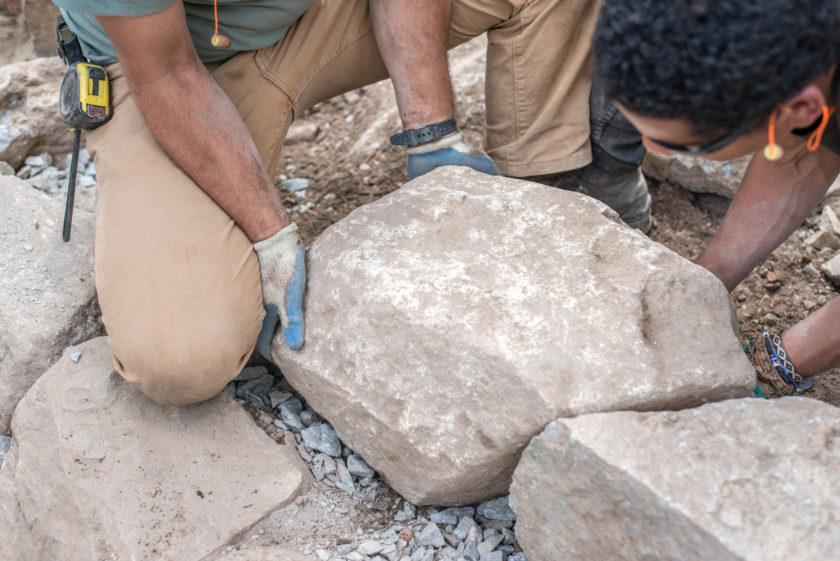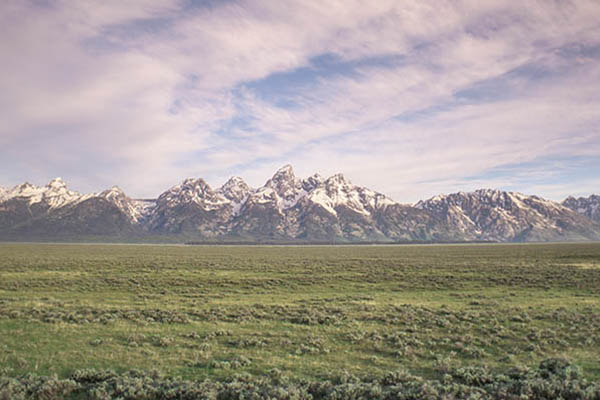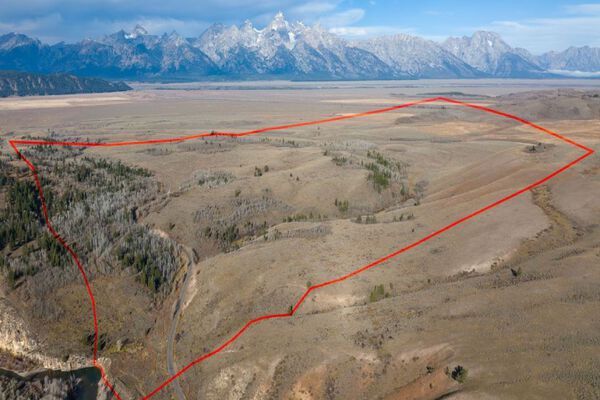Alex St.Clair is a former crew leader who spent 10 seasons building and maintaining the more than 300 miles of trail in Grand Teton National Park. In this series, he shares a glimpse of the hard work involved in trail construction and maintenance.
While perfectly graded and out-sloped trails are a dream to walk, mountainous terrain often requires stone structures to obtain a sustainable pathway. Most national park trail crews employ dry-stone masonry techniques in which no mortar is used to bind the rocks together. Builders carefully select each rock to match the next, then use hammers and chisels to shape them so each fits into its place in the puzzle. Focusing on high, outside contacts between every rock ensures a solid, stable structure that will serve its purpose in the trail for centuries. These techniques were used to build the pyramids of Egypt and the Incan cities of Peru. The most common dry-stone structures are water bars, steps, and retaining walls.
Water bars are part of a drain (discussed last month in this series). They are usually a series of stones placed partially sub-grade at a 45 degree angle across the trail. As water approaches, it is slowed down and diverted off the path. Good contact between the stones is imperative, otherwise the water will penetrate and the structure will fail.

A failing drystone structure. Note the lack of contact between the rocks and loss of sediment from the trail tread.
Steps are constructed when the grade is too steep and the trail needs to gain elevation over a short horizontal distance. Making sure each stone is keyed in is critical. This means the bottom of the step must be buried lower than the top of the step below it. This prevents undercutting (erosion). Many trail builders begin staircases by fully burying a keystone at the base of the project below the first step. This keystone is never seen by trail users, but plays an important roll in anchoring the entire structure. This is one reason it works best to build your stairs from the bottom up.

Rock steps with good contact and coinciding retaining wall along a switchback in the trail. Switchbacks are installed to establish proper grade in the trail and reduce erosion in steep sections.
Retaining walls are one of the most noticeable stone features on a trail. They are usually located at switchbacks and along very steep slopes and serve the purpose of holding up the trail. All stone work is 3-dimensional, but walls impose a greater challenge to builders because they usually require more than one course (layer) stacked on top of another. This means the builder has more contacts to be concerned with—one poor contact and the entire wall can eventually fail.

Ensuring good contact between rocks is imperative in dry-stone masonry. So is teamwork. Here two GTNP trail crew workers set the second course of a multi-tier retaining wall.
When properly built, dry-stone masonry stands the test of time. Many of the stone retaining walls in Grand Teton date back to the 1930s and were built by the Civilian Conservation Corps. The most recent employment of these techniques can be seen in great detail along the new trails and overlooks of Jenny Lake.
 One of the impressive new walls constructed in the frontcountry of Jenny Lake.
One of the impressive new walls constructed in the frontcountry of Jenny Lake.









